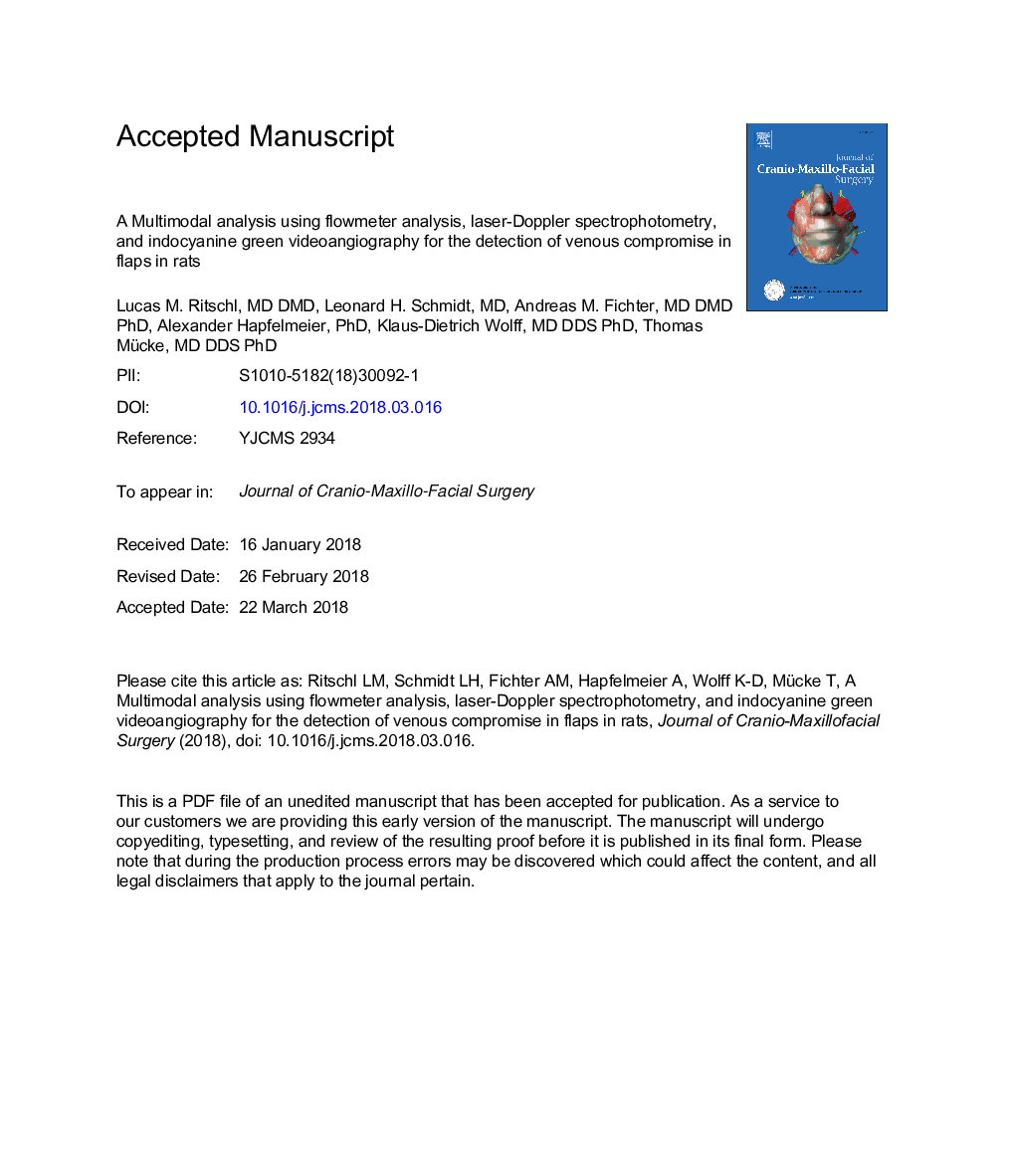| Article ID | Journal | Published Year | Pages | File Type |
|---|---|---|---|---|
| 8698755 | Journal of Cranio-Maxillofacial Surgery | 2018 | 42 Pages |
Abstract
Venous congestion results in tissue damage and remains the most common failure of free microvascular transfer if it is not recognized early. The purpose of this experimental study was to evaluate venous congestion and describe the findings with two different monitoring tools. A standardized epigastric flap was raised, and total occlusion of the draining vein was temporarily applied for 4, 5, 6, or 7Â h. Blood flow measurements, including laser-Doppler flowmetry, and tissue spectrophotometry (O2C) and indocyanine green (ICG) videoangiography using the FLOW® 800 tool, were performed systematically after each surgical step, an interval of venous occlusion, and 1 week of clinical observation. Both monitoring tools were capable of detecting acute venous occlusion. ICG videoangiography data showed a significant decrease in the first and second maximum, and the area under the curve, during venous occlusion, whereas hemoglobin levels in the O2C analysis remained stable. Changes in fluorescence values in border areas of the flap correlated significantly with the incidence of necrosis. O2C data later showed significant correlation with the area of necrosis, and more individual changes during flap monitoring. ICG videoangiography might therefore be useful in the prediction of flap necrosis in critical areas of perfusion.
Related Topics
Health Sciences
Medicine and Dentistry
Dentistry, Oral Surgery and Medicine
Authors
Lucas M. Ritschl, Leonard H. Schmidt, Andreas M. Fichter, Alexander Hapfelmeier, Klaus-Dietrich Wolff, Thomas Mücke,
